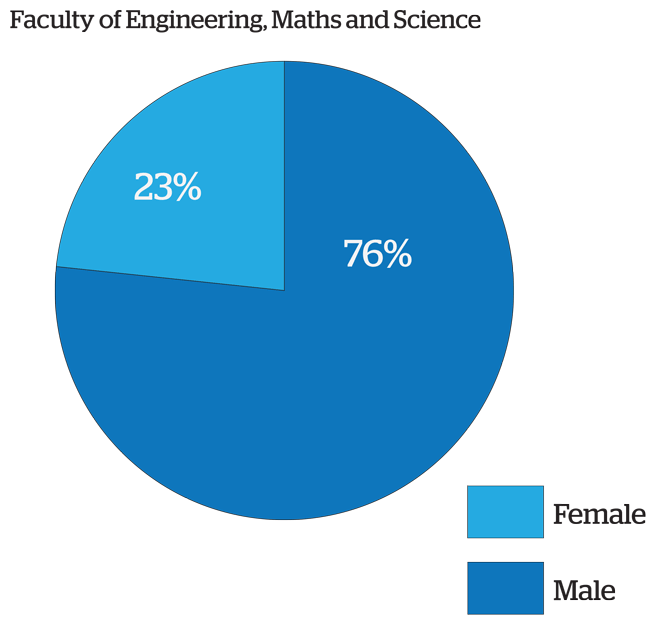
This pattern is clear from statistics supplied by College to Trinity News, and the 2014 Higher Education Authority (HEA) report on gender and academics across third level institutions in Ireland. The University College Cork paper “Through the Glass Ceiling” gives additional confirmation of this pattern across Irish universities as a whole.
The overall breakdown of academic staff in the faculty of Arts, Humanities and Social Sciences (AHSS) was 57% male to 43% female, in line with comparative national and international statistics. However, individual schools within the faculty had considerable divergence from this average – although this was also exacerbated by major differences in staffing numbers.
The academic staff of Near and Middle Eastern Studies and Gender and Women Studies are entirely female, at three and one staff members respectively. Other schools with a high proportion of female to male academics are French, with eight out of ten, and Hispanic Studies at six out of eight.
On the other end of the spectrum are Irish, at two out of nine, and History at six out of twenty-four. English is exactly 50/50, with fourteen male and fourteen female academics.
Small sample sizes make it difficult to draw out any particularly insightful analysis on some schools, as random fluctuations do occur. However, it should be noted that the imbalance in larger departments is likely due to more entrenched gender issues around progression, something seen across third level.
There are some other interesting facts to note from the statistics: for example, less than a third of the potential lecturers for a student doing Politics, Philosophy, Economics and Sociology are women. Bar Irish and German, the language schools all have over half female academic staff. The large difference in gender balance between Classics and History is also interesting, considering the many similarities between the two disciplines.
Science, Technology, Engineering and Medicine (STEM) is an area often said to be particularly gender imbalanced when it comes to academic staff. This is somewhat supported again by the figures, with only 23% female academics in the faculty of Engineering, Maths and Science (EMS). Much like AHSS, this figure deviates somewhat across schools, however the variance is not nearly as sustainable for EMS.
Physics had the lowest proportion of female academics at only two of 24, less than 10%. Maths was similar at 16%, four out of 25. Natural Sciences had the most balanced staff with 13 female staff out of 38, followed by Biochemistry and Immunology with six female staff out of 19.
Health Sciences has a substantial majority of female academics, with 173 out of 272. Medicine has 97 female staff out of 100, and 160 overall. Nursing and Midwifery have a large female majority staff, at 64 out of 81, dragging the overall Health Sciences average up. Pharmacy and Pharma-Science are only one staff member off exact gender parity.
There is clearly an issue when the staff statistics are placed into the context of the broader student population, 58% of which are female. Although this majority is not consistent across faculties or schools, with outliers like Nursing and Midwifery pulling it up, there has been noted a strong tendency over the past decade towards a female majority student population – something which has clearly not, or not yet, affected the gender balance of academic staff.
Questions around gender disparity in academic positions, particularly for permanent and higher level staff are difficult to answer exactly, due to how many factors are at play. Alongside national reports on potential remedies like those of the HEA or “Through the Glass Ceiling” from UCC, College itself produces annual equality monitoring reports which track statistics and suggest possible reasons.
Among the suggested problems is are a lack of role models or mentors for young female academics, leading to attrition and a widespread perception of a ‘boys club’ within certain schools that implicitly discourages women from applying for or receiving positions. Wider societal issues are also often cited in reports, for example issues around the potential for one to have a family or maternity leave. These issues affect high-level positions across all industries and sectors.
College’s equality office and individual schools have implemented a variety of measures to deal with the gender imbalance, ranging from continuous reports on the issue to specific scholarships. This year college was awarded an institutional Athena SWAN award for the participation of women in STEM. The schools of Physics, Chemistry and Natural Sciences also won individual Athena SWAN awards.








